UPSC Daily Current Affairs- 17th May 2024 | Current Affairs & Hindu Analysis: Daily, Weekly & Monthly PDF Download
| Table of contents |

|
| SLOVAKIA |

|
| Apple Cultivation |

|
| Recipe for a Livable Planet Report |

|
| POLLING STATIONS |

|
| Swachhata Pakhwada |

|
| MERCURY POLLUTION |

|
| Chief of Defence Staff (CDS) |

|
| PREFIRE Polar Mission |

|
GS-I/Geography
SLOVAKIA
Source: NDTV
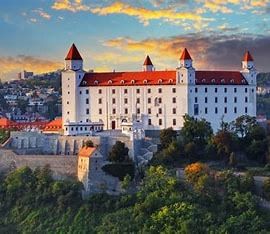
Why in News?
Slovak Prime Minister Robert Fico was shot multiple times on Wednesday after a cabinet meeting in the central town of Handlova.
Background:
- Robert Fico, a former Communist Party member, began his fourth term in power last October and has shifted Slovakia's foreign policy towards more pro-Russian stances.
- During his current tenure, Fico has attracted global attention due to controversial remarks concerning Ukraine, suggesting territorial concessions to Moscow for resolving the conflict.
ABOUT SLOVAKIA :
- Slovakia, officially known as the Slovak Republic, is a landlocked nation located in Central Europe.
- It shares borders with Poland to the north, Ukraine to the east, Hungary to the south, Austria to the west, and the Czech Republic to the northwest.
- Spanning approximately 49,000 square kilometers, Slovakia is predominantly mountainous and home to over 5.4 million inhabitants.
- The capital and largest city of Slovakia is Bratislava, with Košice as the second-largest urban center.
- Independently established on January 1, 1993, Slovakia boasts a developed economy with a high income level.
- Slovakia holds membership in various international organizations, including the European Union, Eurozone, Schengen Area, United Nations, NATO, CERN, OECD, WTO, and the Council of Europe.
- Renowned as the world's leading per-capita automobile producer, Slovakia manufactured 1.1 million cars in 2019, constituting 43% of its industrial production.
GS-I/Geography
Apple Cultivation
Source: DTE
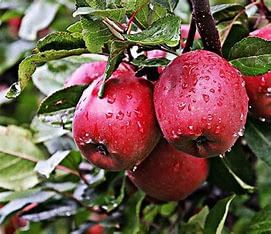
Why in News?
Gradual warming of temperatures observed over the past few decades has made Apple cultivation viable in the lower regions of Spiti, up to an elevation of 3,400 meters above sea level.
About Apple Cultivation:
- Apple (Malus pumila) is a significant temperate fruit.
- In India, apple-growing areas do not fall in the temperate zone; however, the prevailing temperate climate of the region is a result of the Himalayan ranges and high altitudes.
Climatic Conditions Required:
- Temperature: The average summer temperature should range around 21-24 degrees Celsius during the active growth period.
- Altitude: It can be cultivated at an altitude of 1500-2700 meters above sea level.
- Rainfall: Well-distributed rainfall of 1000-1250 mm throughout the growing season is most favorable for the optimum growth and fruitfulness of apple trees.
- Soil: Apples thrive best on well-drained, loamy soils.
Apple Growing Areas in India:
- In India, apples are predominantly cultivated in Jammu & Kashmir, Himachal Pradesh, the hills of Uttar Pradesh, and Uttaranchal.
- They are also grown to a smaller extent in Arunachal Pradesh, Nagaland, Punjab, and Sikkim.
GS-II/Polity and Governance
Recipe for a Livable Planet Report
Source: World Bank

Why in News?
The World Bank issued a recent report emphasizing the need for annual investments amounting to USD 260 billion to halve agri-food emissions by 2030 and achieve net zero by 2050.
Background
- The "Recipe for a Livable Planet" serves as a comprehensive global roadmap aimed at reducing the impact of the agrifood system on climate change.
- This initiative demonstrates how the agricultural sector, responsible for global food production, can decrease greenhouse gas emissions while ensuring food security worldwide.
Key Highlights of the Report
- The report outlines a strategic framework for diminishing the agri-food system's influence on climate change, proposing measures to significantly reduce global greenhouse gas emissions.
- Approximately one-third of global greenhouse gas emissions stem from agri-food activities, surpassing the combined emissions from heat and electricity worldwide.
- Developing countries account for a substantial portion of these emissions, necessitating targeted mitigation strategies tailored to their specific needs.
- It is crucial to address emissions throughout the entire food value chain, including land use changes, as a significant portion of emissions originates beyond the farm level.
Opportunities Highlighted by the Report
- The agri-food sector presents cost-effective opportunities for climate action, such as enhancing land management to sequester carbon from the atmosphere.
- Investing in reducing agri-food emissions can lead to significant benefits in health, economy, and the environment, outweighing the costs involved.
- Differentiated strategies are suggested for high-income, middle-income, and low-income countries to achieve emissions reductions through various means like technology transfer and sustainable agricultural practices.
- The report emphasizes the importance of private sector investment in agri-food mitigation, policy changes favoring low-emission technologies, and the adoption of digital tools for better emissions data.
Key Highlights Related to India in the Report
- India is highlighted as one of the top countries in terms of annual agri-food system emissions, alongside China and Brazil.
- The report underscores that India has significant potential to reduce emissions through cost-effective measures, particularly in agriculture.
- Key mitigation options for India include improved livestock practices, better water and fertilizer management, and addressing methane emissions from agriculture.
- India's high rate of food loss and waste presents another opportunity for impactful emission reduction, alongside the need for international support to realize its mitigation potential.
GS-II/Polity and Governance
POLLING STATIONS
Source: Indian Express

Why in News?
During the ongoing Lok Sabha elections, 96.8 crore electors are registered to vote at 10.5 lakh polling stations nationwide.
Background:
The list of polling stations is verified and updated annually during electoral roll revisions.
Key Takeaways
Responsibility of District Election Officer
According to Section 25 of the Representation of the People Act, 1951 (RPA), the district election officer (DEO) is responsible for establishing and publishing the list of polling stations in their district.
Setting up Polling Stations: Norms and Principles
There are specific principles governing the establishment of polling stations:
- Voters should not have to travel more than two kilometers to cast their votes.
- A station must have a minimum area of 20 square meters.
- Each station can serve a maximum of 1,500 electors.
- A village with over 300 voters is provided with a polling station.
- These principles are flexible; for instance, in areas with geographical challenges like rugged terrains, polling stations can cater to fewer than 300 voters. Conversely, additional polling stations are set up if the number of electors exceeds 1,500, preferably in the same building. Example: Malogam polling station in Arunachal Pradesh serves only one voter.
Urban areas can have a maximum of four polling stations in one building, while rural areas can have up to two.
Locations for polling stations are selected carefully, preferably in government or semi-government institutions. Private buildings are used as a last resort and may require written consent or requisition under the RPA.
Layout and Facilities
- Polling stations have separate entry and exit points for voters, even with a single door. Temporary fencing using bamboo and ropes is used to manage this.
- The voting compartment is constructed from specific materials and dimensions to ensure voter privacy and security.
People Inside Polling Stations, Voting Day Regulations
- Only specific individuals are allowed inside polling stations, including registered electors, polling officers, candidates, media personnel, and others designated by the Presiding Officer.
- A polling party comprises a Presiding Officer and three Polling Officers, each with specific responsibilities in the voting process.
- There are strict regulations against political propaganda, use of electronic devices, and canvassing near polling stations to maintain the integrity of the voting process.
GS-II/Governance
Swachhata Pakhwada
Source: PIB
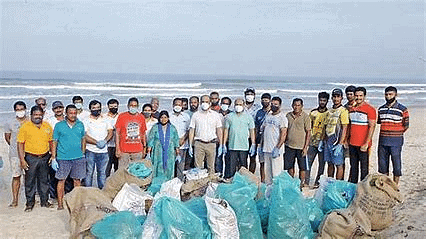
Why in News?
Recently, the Ministry of Development of North Eastern Region (MDoNER) has taken a significant step towards promoting cleanliness and environmental sustainability with the launch of Swachhata Pakhwada and it will run from 16th May to 31st May 2024.
About Swachhata Pakhwada:
- It is an initiative launched in April, 2016 under the Swachh Bharat Mission.
- Objective: It was launched with the objective of bringing a fortnight of intense focus on the issues and practices of Swachhata by engaging the central government ministries/departments.
- Aim: It aims to include all ministries and departments through a common programme to contribute for Swachh Bharat Mission.
- An annual calendar is pre-circulated among the ministries to help them plan for the Pakhwada activities.
- The ministries observing Swachhata Pakhwada are monitored closely using the online monitoring system of Swachhata Samiksha where action plans, images, videos related to Swachhata activities are uploaded and shared.
- For the Pakhwada fortnight, observing ministries are considered as 'Swachhata Ministries' and are expected to bring qualitative swachhata improvements in their jurisdictions.
Key facts about Swachh Bharat Mission:
- The Indian government launched the Swachh Bharat Mission on October 2, 2014.
- The mission covered all rural and urban areas.
- The urban component of the mission is implemented by the Ministry of Urban Development, and the rural component by the Ministry of Drinking Water and Sanitation.
- The programme includes elimination of open defecation, conversion of unsanitary toilets to pour flush toilets, eradication of manual scavenging, municipal solid waste management and bringing about a behavioral change in people regarding healthy sanitation practices.
GS-III/Environment and Ecology
MERCURY POLLUTION
Source: UNEP
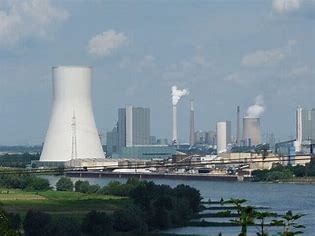
Why in News?
The Governments of Albania, Burkina Faso, India, Montenegro, and Uganda have come together to address chemical pollution. They have initiated a $134-million project aimed at eliminating the use of mercury in medical devices.
Background:
- Mercury ranks among the top 10 chemicals of significant public health concern as per the WHO.
- It is released into the environment through various human activities, spreading globally and accumulating in the food chain.
- People are primarily exposed to mercury by consuming contaminated fish or directly inhaling mercury vapor, with children, infants, and fetuses being at the highest risk due to their developing nervous systems.
About Mercury
- Mercury, represented by Hg on the periodic table, is the sole common metal that is liquid at normal temperatures.
- It is dense, silvery-white, and slowly tarnishes when exposed to moist air.
Mercury Pollution
- Mercury is naturally present in the earth's crust but has been extensively distributed globally due to human activities like mining and burning fossil fuels.
- It is a persistent, bioaccumulative, and toxic pollutant that, when released, accumulates in water sediments, transforming into toxic methylmercury and entering the food chain.
- Mercury contamination poses significant health and environmental risks as methylmercury easily enters the bloodstream, impacting the brain.
Ways Mercury Enters the Environment:
- Mercury is emitted into the air naturally through sources like volcanoes, rock weathering, forest fires, and soils.
- Human activities, such as burning fossil fuels and waste, also release mercury into the atmosphere.
- Natural processes like ocean water evaporation can reintroduce mercury into the environment.
Human Exposure:
- People are exposed to mercury mainly through consuming fish and shellfish contaminated with methylmercury.
- Mercury is also found in certain beauty products like skin-lightening creams, eye makeup, and eye-cleansing products.
Main Sources of Mercury Emissions:
- Artisanal and small-scale gold mining globally accounts for the most anthropogenic mercury emissions, followed by coal combustion.
Mercury in Healthcare:
- Medical devices like thermometers and blood pressure measuring devices contain mercury but are safe when intact.
- However, if these devices break, they can release mercury vapor, posing health risks to both healthcare workers and patients.
Phasing out Mercury Measuring Devices in Healthcare Project
- Initiated by the United Nations Environment Programme (UNEP) and funded by the Global Environment Facility (GEF), this project, executed by the World Health Organization (WHO), aims to cease the import, export, and production of mercury-containing medical devices.
- The project will promote the adoption of accurate, affordable, and safe mercury-free alternatives while enhancing the management of mercury-containing medical waste.
Chief of Defence Staff (CDS)
Source: Indian Express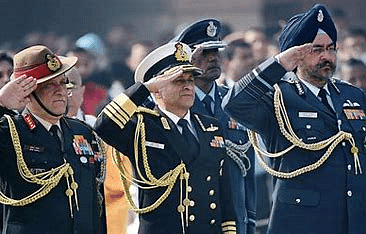
Why in News?
Media reports indicate a growing focus on the restructuring of the Indian military into integrated theatre commands (ITC).
- The armed forces are contemplating the appointment of a Vice Chief of Defence Staff and a Deputy Chief of Defence Staff.
Background:
- New high-level positions are being proposed to assist the CDS in enhancing jointness and bolstering composite combat capability.
About CDS:
- The CDS serves as the military head and permanent Chairman of the Chiefs of Staff Committee (COSC) of the Indian Armed Forces.
- As the highest-ranking active duty uniformed officer in the Indian military, the CDS acts as the chief military advisor to the Minister of Defence.
- Additionally, the Chief heads the Department of Military Affairs.
- General Bipin Rawat was the inaugural Chief of Defence Staff, assuming office on 1 January 2020.
- The position was established to enhance coordination, tri-service effectiveness, and overall integration of the combat capabilities of the Indian armed forces.
- Service Rules of the Army, Navy, and Air Force were modified by the government to allow retired Service Chiefs and three-star officers to be considered for the top military position in the country.
- Retired officers being considered for the role should not have exceeded 62 years at the time of appointment.
GS-III/Science and Technology
PREFIRE Polar Mission
Source: Science and Technology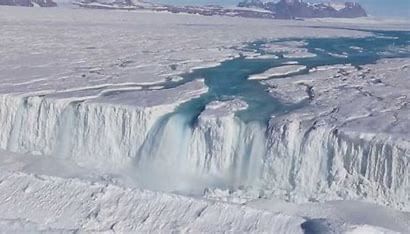
Why in News?
A NASA PREFIRE polar mission is scheduled for launch from New Zealand on May 22.
- About PREFIRE Polar Mission: The PREFIRE polar mission involves twin satellites, each equipped with an instrument, measuring the poles approximately six hours apart.
- Objective: The primary aim of the mission is to unveil the complete spectrum of heat loss from Earth's polar regions, enhancing the accuracy of climate models.
- Aim: The data gathered from the PREFIRE mission aims to bridge existing knowledge gaps, offering insights to enhance climate change and sea level rise predictions.
- The mission seeks to provide fresh insights into the interplay between Earth's atmosphere and ice, impacting the level of heat radiated from the Arctic and Antarctic regions.
- How will the satellites operate? The mission will deploy cube satellites, akin to the size of a shoebox, launched via an Electron launch vehicle.
- Equipped with proven technology from Mars, the satellites will focus on measuring an underexplored segment of Earth's radiant energy.
- The twin satellites, each housing a thermal infrared spectrometer, will orbit asynchronously near the poles, ensuring overlapping passes every few hours to maximize coverage.
- Weighing less than 6 pounds (3 kilograms) each, the instruments will utilize thermocouples for readings, akin to those in household thermostats.
- Impacts of the mission: The mission aims to investigate the rapid warming of the Arctic compared to the global average since the 1970s.
- Scientists anticipate gaining insights into the emission efficiency of far-infrared heat by substances like snow and sea ice, along with understanding how clouds influence far-infrared radiation escaping into space.
- Researchers hope to enhance predictions regarding future changes in heat exchange between Earth and space, and the subsequent impacts on phenomena such as ice sheet melting, atmospheric temperatures, and global weather patterns.
|
38 videos|5293 docs|1118 tests
|
FAQs on UPSC Daily Current Affairs- 17th May 2024 - Current Affairs & Hindu Analysis: Daily, Weekly & Monthly
| 1. What is the significance of Apple Cultivation in Slovakia? |  |
| 2. How can Mercury Pollution impact the environment and human health? |  |
| 3. What is the Swachhata Pakhwada initiative and how does it promote cleanliness in India? |  |
| 4. What is the role of the Chief of Defence Staff (CDS) in the military hierarchy? |  |
| 5. How does the PREFIRE Polar Mission contribute to our understanding of climate change? |  |















